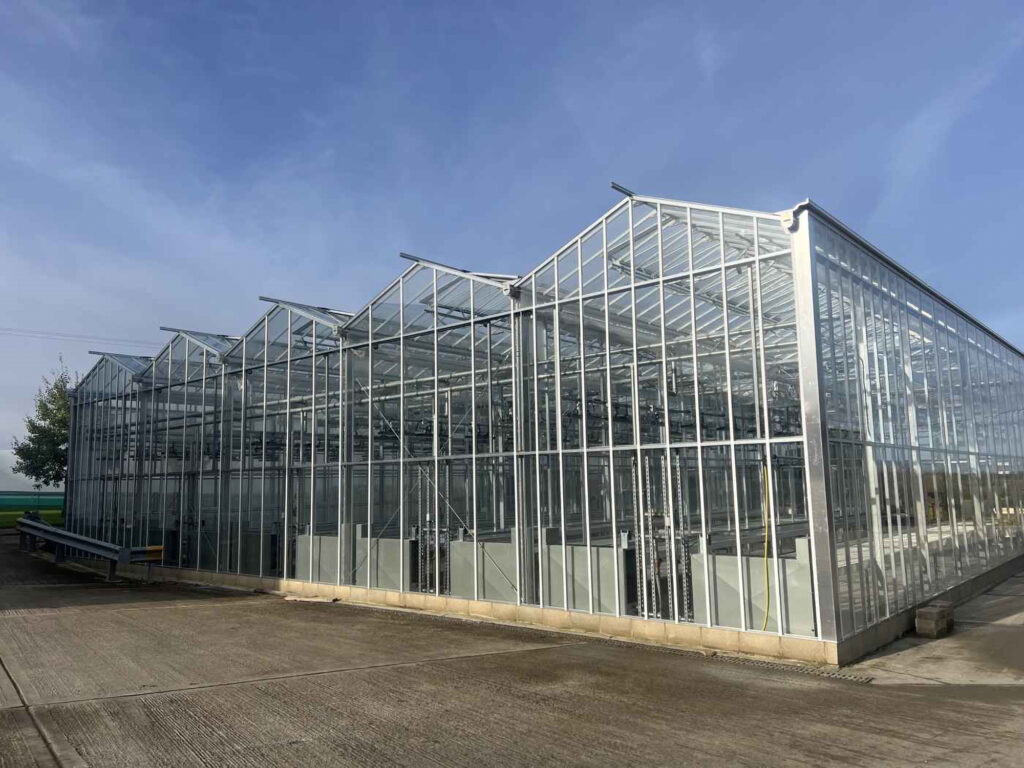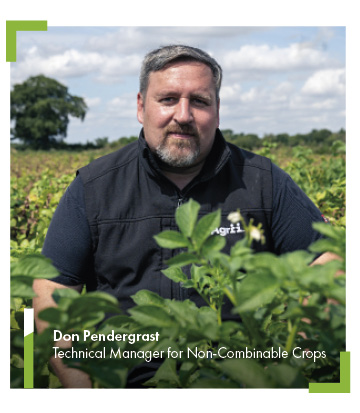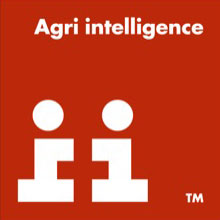Don Pendergrast, Agrii technical manager for non-combinable crops, explains why Agrii is investing almost a million pounds in a new glasshouse.

Agrii is nearing the completion of a 480m2 glasshouse that will extend our research capacity and enhance our advice to customers.
At a cost of almost £1 million, the glasshouse and adjoining polytunnels will also support the creation of two new roles, those of a glasshouse manager and technician.
The investment serves several purposes. First, utilising the highly controlled environment of the glasshouse to extend the season means we can fast-track the process of evaluating new products and technologies or changes in application practice. This ‘fail fast’ approach of gathering feedback at the early stages and adapting quickly allows Agrii to take only those products or practices that are worthwhile to the polytunnel or field for commercial assessment.
An advantage of having this capacity in-house is that we can assess these new products or techniques under regimes we believe will be conducive to performance, reflect industry practice or align with future regulations or consumer demands. We can also consider products as part of a programme and on crops beyond the often-short list for which they are authorised. The ability to do this in-house rather than contracting an institute or university makes Agrii unique among its peers.
Second, the research arena is awash with promising new products, often with grand claims to performance, but usually based on limited data and niche crops.
One of this investment’s most exciting opportunities is looking beyond these claims and considering the ‘what if’ scenarios. We often see products with potential outside the crops or pests the scientists envisage. Having the capacity to explore these applications in a timely and reasonably inexpensive manner is nothing short of liberating.
This is especially pertinent with biological crop protection products. We have come to understand that external factors often determine the performance of products containing live bacteria, endophytes or fatty acids.

To our frustration, we have found that few others have the capability to fully consider the influence of environmental conditions or the method and timing of application in identifying how to get the best from these products. It is, therefore, not uncommon to lose a season or more because of this poor understanding or lack of flexibility. Identifying the parameters that shape how we manage crop threats or support crop health at an early stage will be integral to refining the systems that sustain a productive and profitable industry.
Third, the investment will support targeted research and trials and the need to present the findings more demonstrably. This is especially valuable with mode of action and efficacy work.
To enable this, the investment also considers several novel pieces of technology. Among these is a crop scanner with the capability to look below the soil surface to see what is happening within the rhizosphere of the roots and a spray rig for precision application techniques.
This highly specialised work is hard to perform in the field but essential to promoting understanding among agronomists, regulators and academics. It is also fundamental to our proposition. We test everything we sell, from products to programmes to systems; doing it properly can involve specialist capabilities. We see this as essential to supporting our customers: agriculture and horticulture face many challenges from market volatility, a changing climate with erratic weather and policies to promote the environment. This investment is part of our efforts to help growers mitigate these issues while remaining profitable.
Finally, it means we can engage in conversations on our industry’s future shape and direction.
We are already at a level where we can undertake work to support the implementation of the European Union’s biostimulant directive, but we have greater aspirations. At some point, the UK will address the policy gaps inherited from the EU, especially in the case of biologicals. At the same time, new regulations will be required for the commercialisation of gene-edited crops. We want to contribute – and be seen to do so meaningfully – to that policy forum.
Where appropriate, we will share what we have learned from our work with others by seeking publication in a suitable peer-reviewed journal. We are well-placed to develop findings from the glasshouse and apply them to the commercial and environmental realities of the field. The scope of our research focus is broad, with the first horticultural crop trials scheduled for early 2025, while the arable trials will commence in the spring. This is no small venture and far more than just another greenhouse.
Come along to our Throws Farm event to see the new glasshouse on 10th June.
Register your interest here.



